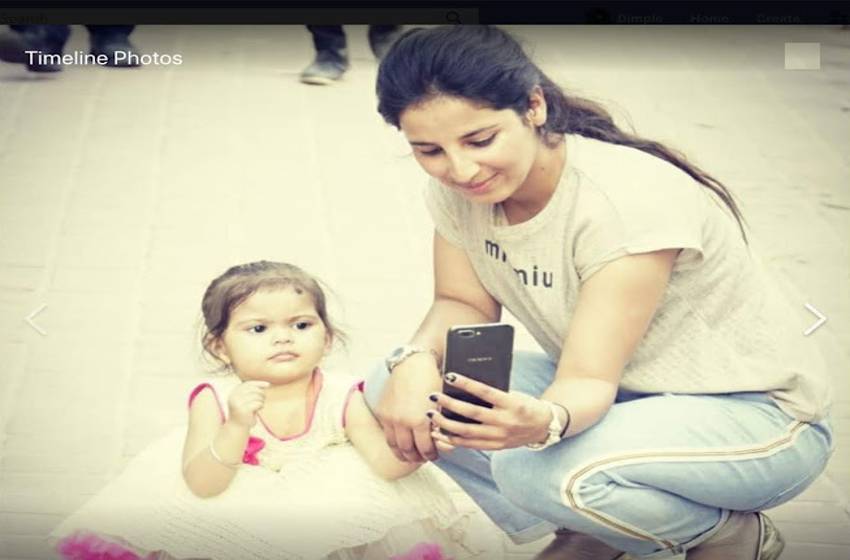The origin of Mother’s Day goes back to the era of ancient Greek and Romans. But the roots of Mother’s Day history can also be traced to the UK where a Mothering Sunday was celebrated much before the festival saw the light of the day in the US. However, the celebration of the festival as it is seen today is a recent phenomenon and not even a hundred years old.
Thanks to the hard work of the pioneering women of their times, Julia Ward Howe and Anna Jarvis that day came into existence. Today the festival of Mothers day is celebrated across 46 countries (though on different dates) and is a hugely popular affair. Millions of people across the globe take the day as an opportunity to honor their mothers, thank them for their efforts in giving them life, raising them, and being their constant support and well-wisher.
Earliest History of Mothers Day
The earliest history of Mothers Day dates back to the ancient annual spring festival the Greeks dedicated to maternal goddesses. The Greeks used the occasion to honor Rhea, wife of Cronus and the mother of many deities of Greek mythology.
Ancient Romans, too, celebrated a spring festival, called Hilaria dedicated to Cybele, a mother goddess. It may be noted that ceremonies in honor of Cybele began some 250 years before Christ was born. The celebration made on the Ides of March by making offerings in the temple of Cybele lasted for three days and included parades, games, and masquerades. The celebrations were notorious enough that followers of Cybele were banished from Rome.
Early Christians celebrated a Mother’s Day of sorts during the festival on the fourth Sunday of Lent in honor of the Virgin Mary, the Mother of Christ. In England, the holiday was expanded to include all mothers. It was then called Mothering Sunday.
History of Mother’s Day: Mothering Sunday
The more recent history of Mothers Day dates back to the 1600s in England. Here Mothering Sunday was celebrated annually on the fourth Sunday of Lent (the 40-day period leading up to Easter) to honor mothers. After a prayer service in church to honor Virgin Mary, children brought gifts and flowers to pay tribute to their own mothers.
On the occasion, servants, apprentices, and other employees staying away from their homes were encouraged by their employers to visit their mothers and honor them. Traditionally children brought with them gifts and a special fruit cake or fruit-filled pastry called a simnel. Yugoslavs and people in other nations have observed similar days.
The custom of celebrating Mothering Sunday died out almost completely by the 19th century. However, the day came to be celebrated again after World War II, when American servicemen brought the custom and commercial enterprises used it as an occasion for sales.
History of Mother’s Day: Julia Ward Howe
The idea of an official celebration of Mother’s day in the US was first suggested by Julia Ward Howe in 1872. An activist, writer, and poet Julia shot to fame with her famous Civil War song, “Battle Hymn of the Republic”. Julia Ward Howe suggested that June 2 be annually celebrated as Mothers Day and should be dedicated to peace. She wrote a passionate appeal to women and urged them to rise against war in her famous Mothers Day Proclamation, written in Boston in 1870. She also initiated a Mothers’ Peace Day observance on the second Sunday in June in Boston and held the meeting for a number of years. Julia tirelessly championed the cause of the official celebration of Mothers Day and the declaration of an official holiday on the day. Her idea spread but was later replaced by the Mothers’ Day holiday now celebrated in May.
History of Mother’s Day: Anna Jarvis
Anna Jarvis is recognized as the Founder of Mothers Day in the US. Though Anna Jarvis never married and never had kids, she is also known as the Mother of Mothers Day, an apt title for the lady who worked hard to bestow honor on all mothers.
Anna Jarvis got the inspiration of celebrating Mothers Day from her own mother Mrs. Anna Marie Reeves Jarvis in her childhood. An activist and social worker, Mrs. Jarvis used to express her desire that someday someone must honor all mothers, living and dead, and pay tribute to the contributions made by them.
A loving daughter, Anna never forgot her mother’s word and when her mother died in 1905, she resolved to fulfill her mother’s desire of having a mothers day. The growing negligent attitude of adult Americans toward their mothers and a desire to honor her mothers soared her ambitions.
To begin with, Anna sends Carnations to the church service in Grafton, West Virginia to honor her mother. Carnations were her mother’s favorite flower and Anna felt that they symbolized mother, pure love. Later Anna along with her supporters wrote letters to people in positions of power lobbying for the official declaration of the Mothers Day holiday. The hard work paid off. By 1911, Mother’s Day was celebrated in almost every state in the Union, and on May 8, 1914, President Woodrow Wilson signed a Joint Resolution designating the second Sunday in May as Mother’s Day.
History of Mother’s Day: Present Day Celebrations
Today Mothers Day is celebrated in several countries including the US, UK, India, Denmark, Finland, Italy, Turkey, Australia, Mexico, Canada, China, Japan, and Belgium. People take the day as an opportunity to pay tribute to their mothers and thank them for all their love and support. The day has become hugely popular and in several countries, phone lines witness maximum traffic. There is also a tradition of gifting flowers, cards, and others gift to mothers on Mothers Day. The festival has become commercialized to a great extent. Florists, card manufacturers, and gift sellers see huge business potential in the day and make good money through a rigorous advertising campaign.
It is unfortunate to note that Ms. Anna Jarvis, who devoted her life to the declaration of the Mothers Day holiday was deeply hurt to note the huge commercialization of the day.
First Mother’s Day
A woman’s First Mothers Day evokes mixed feelings of joy and pride. It is the time for the new mother to celebrate her first mothers day. She must relish the joys of holding her baby, feeling her own heartbeat inside it, and should take pride in the fact that she is the ‘mother’ of that adorable little child. On the special day of the new mother, the child’s father and other close relatives and friends must come forward to hold celebrations and make the mother feel important and happy.
Fathers to Celebrate Wife’s First Mother’s Day
As the baby is too young to say thanks to its mothers, the wife’s first Mother’s Day Celebrations should be celebrated by the child’s father. Fathers must take initiative to give a special day to the new mother. They must realize that it is tiresome for the mother to handle the infant all the time. She should be given a day’s rest and fathers must take responsibility for looking after the child, changing nappies, and feeding the baby, at least for a day. It would be a nice idea to pamper the mother with flowers, cards, and a gift. She would forget the drudgery of child rearing and feel proud of being a mother.
Time to say Thank You to your own Mother
First Mothers Day is also the time when a woman realizes the value of her own mother. The mother’s words, “You will not understand the importance of all I do for you till you yourself become a mother!”, keep reoccurring in her mind and would sound so very true. The new mother feels all the more grateful to her own mother for bringing her up so well and being so caring a mother. On her first Mother’s Day, the new mother must say a big thank you to her own mother with a big hug.
‘Mother’ Name in Different Languages
- English – Mom, Mummy, Mother
- Hindi – Maatta ( माता ), Maa
- Marathi – Aai ( आई )
- Urdu – Ammi
- French – Mere ( mère )
- German – Mutter ( Mutter )
- Italian – Madre ( madre )
- Portuguese – Mãe
- Albanian – Mëmë; Nënë; Burim; Kryemurgeshë
- Belarusan – Matka
- Cebuano – Monahan; Nanay
- Serbian – Majka
- Czech – Abatyse
- Dutch – Moeder; More
- Estonian – Ema
- Frisian – Emo, Emä, Kantaäiti, Äiti
- Greek – Màna
- Hawaiian – Machine
- Hungarian – Anya, Fu
- Ilongo – Iloy; Nanay; Nay
- Indonesian – Induk, Ibu, Biang, Nyokap
- Afrikaans – moeder
- Arabic- والدة
- Chinese (Traditional) – 母親
- Thai – แม่
When is Mother’s Day
Mother’s Day is celebrated in several countries across the globe though the month and date on which Mother’s Day is celebrated in different countries vary. Most countries celebrate Mothers Day on the second Sunday in the Month of May. This Mother’s Day date was declared by US President Woodrow Wilson on May 8, 1914, when he signed a Joint Resolution designating the second Sunday in May as Mother’s Day. This US tradition of celebrating Mothers Day and paying tribute to mothers spread across several countries over the years and these countries too adopted the second Sunday of May as Mother’s Day.
However, in many countries, the way Mothers Day is celebrated varies and is quite different from the manner in which Mothers Day is celebrated in the US. But what is more important than the date and fashion of the celebration is the feeling behind the festival. The idea of celebrating Mother’s Day the world over is to pay tribute to mothers for all their love and support and to make them feel special.
Mother’s Day Date in Different Countries
- United States: Second Sunday in the month of May.
- Australia: Second Sunday in the month of May.
- Belgium: Second Sunday in the month of May.
- Brazil: Second Sunday in the month of May.
- Canada: Second Sunday in the month of May.
- Denmark: Second Sunday in the month of May.
- Finland: Second Sunday in the month of May.
- Germany: Second Sunday in the month of May.
- Greece: Second Sunday in the month of May.
- India: Second Sunday in the month of May.
- Italy: Second Sunday in the month of May.
- Japan: Second Sunday in the month of May.
- New Zealand: Second Sunday in the month of May.
- Singapore: Second Sunday in the month of May.
- Turkey: Second Sunday in the month of May.
- The United Kingdom/England: Mother’s Day is called Mothering Sunday and falls on the fourth Sunday in Lent.
- France: First Sunday in June or last Sunday in May
- Much of South America (as well as Mexico), Bahrain, Malaysia, Oman, Pakistan, Qatar, Saudi Arabia, United Arab Emirates: May 10
- Mexico: – May 8
- Albania: – March 8
- Russia: – November 28
- Poland: – May 26
- Indonesia: – December 22
- Egypt: – March 21
- Norway: – February 13
- Thailand: Birthday of Queen Sirikit Kitiyakara – August 12
- Sweden: Last Sunday in May
- Lebanon: First day of Spring
- Norway: The second Sunday in February
- Austria, Hong Kong, Netherlands, Taiwan, Hungary, Portugal, South Africa, Spain: First Sunday in May
- Antwerp (Belgium), Costa Rica: Assumption day – August 15
- Argentina: The Día de la Madre – The second or third Sunday in October
Also Read: International Mother’s Day





